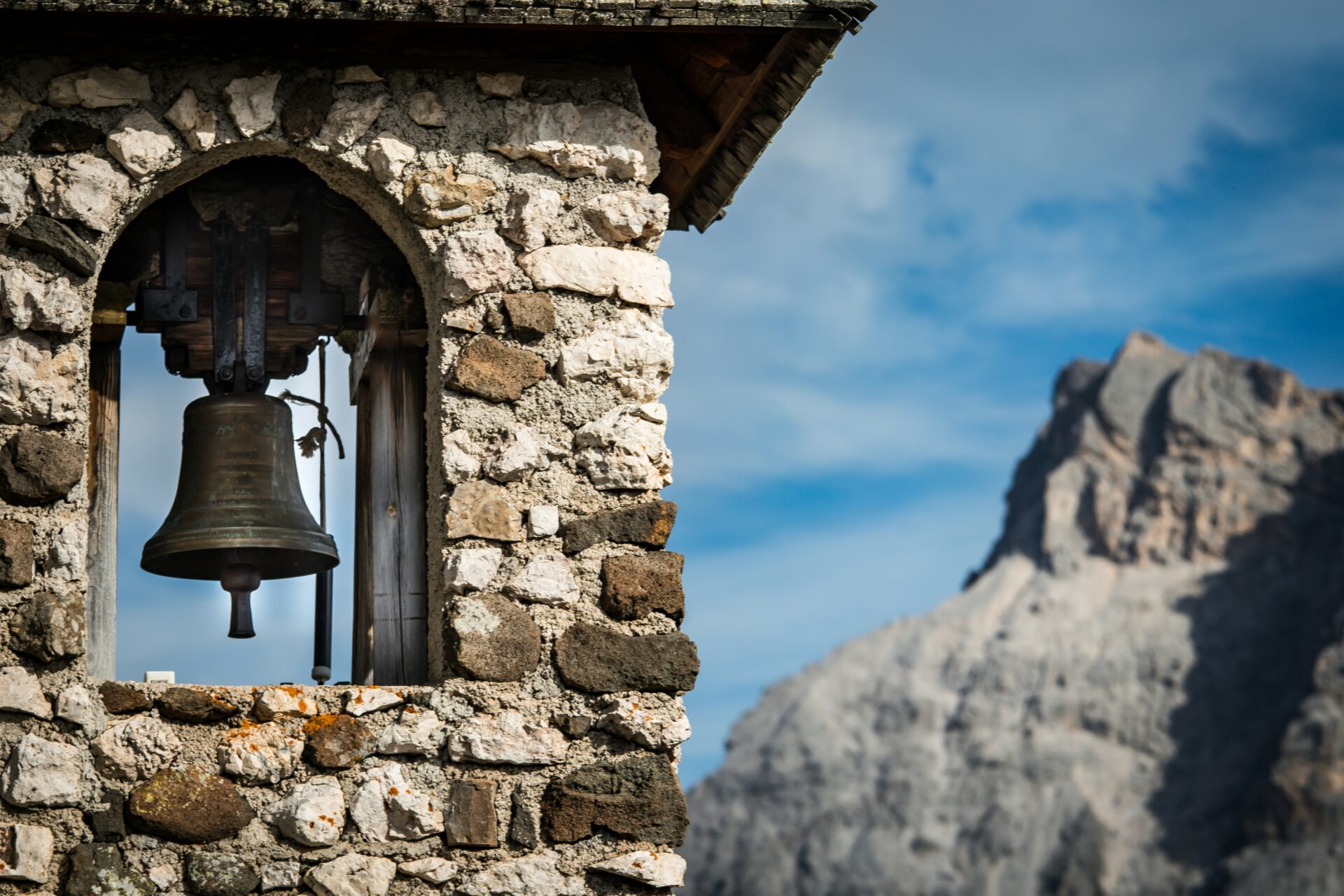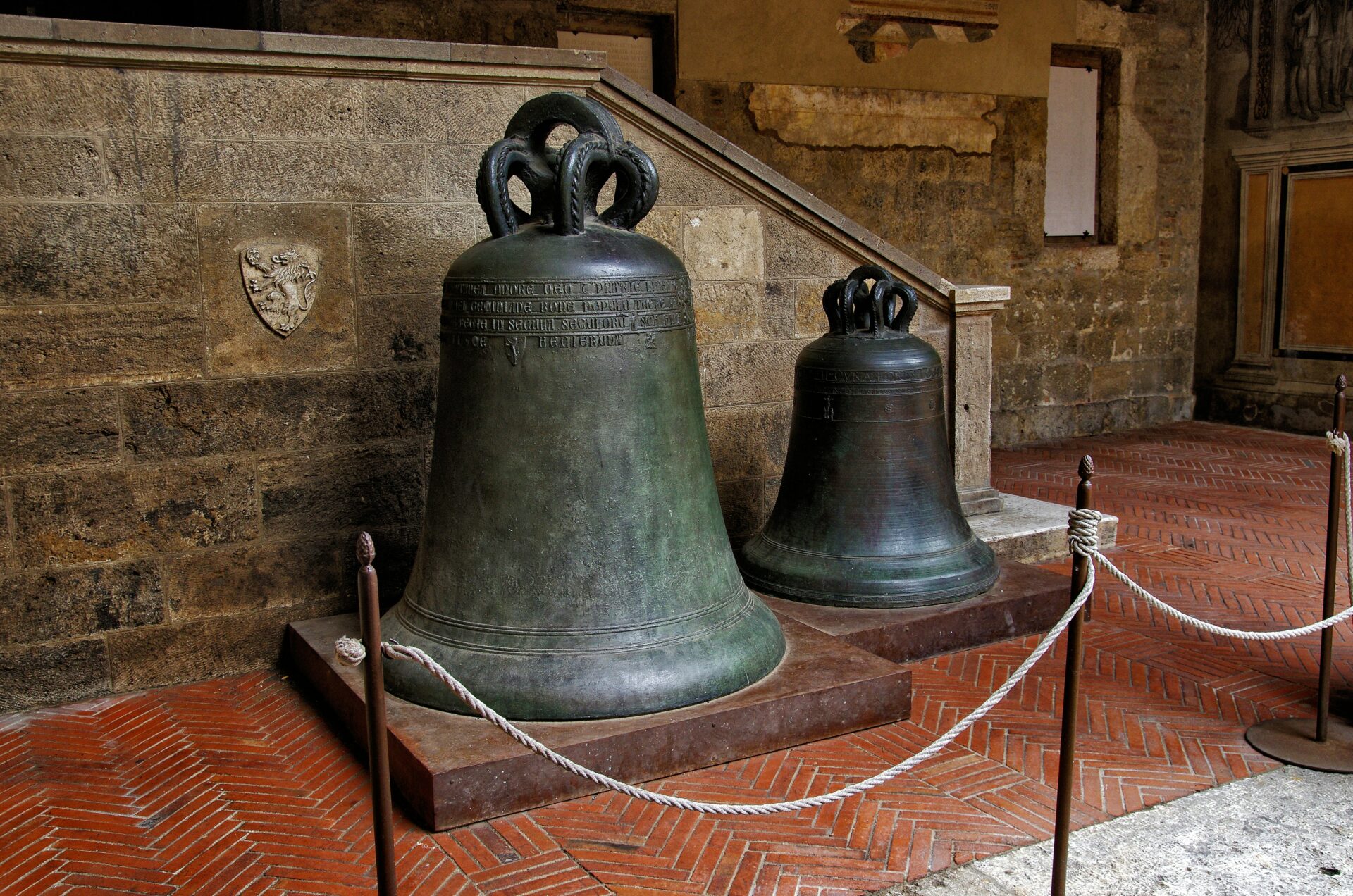The morning sun spilled gold across Agnone’s cobblestones as I wandered toward one of the world’s oldest bell foundries. Marinelli Bell Foundry, which dates back to around 1000 AD, has crafted magnificent bronze bells for churches—including the Vatican—for over a thousand years.
Standing in the workshop where craftsmen have perfected their art through the ages, I couldn’t help but feel the weight of history. The resonant tones that have marked time for generations echoed all around me.
The ancient methods used here have barely shifted over the centuries. I watched artisans shape clay, carve wax, and handle molten bronze, and honestly, it felt like time travel.

Each bell takes months to create. Detailed decorations and inscriptions make every piece one-of-a-kind.
What really got me was how the foundry connects to faith and community. These bells aren’t just musical instruments or timekeepers—they’re cultural artifacts. For generations, they’ve called people to prayer, announced celebrations, and warned of dangers.
The craftsmen talked about their work with such pride. They know their bells will keep ringing long after they’re gone, linking past and future with bronze and sound.
The Historical Legacy of Italian Bell Foundries
Italy’s bell foundries are living monuments to craftsmanship that stretches across centuries. These institutions have shaped the soundscape of Italian life and influenced religious practices and cultural traditions throughout Europe.
Origins of Bell Making in Italy
Bell making in Italy goes back to medieval times. Some foundries trace their roots to the 10th century.
Agnone, this little town in central Italy, hosts one of the world’s oldest bell foundries. It’s been producing bells for the Catholic Church for almost a thousand years.
During my visit, craftsmen explained how early Italian bell makers developed unique bronze alloys to get those resonant tones. They passed down their techniques from one generation to the next, keeping secrets close.

The earliest bells looked simple but played a huge role—marking time, calling to prayer, and warning of danger. Many foundries started as family businesses, and some still are.
Evolution of Church Bells
Over the centuries, Italian church bells changed a lot. I watched artisans demonstrate how decorative elements grew more elaborate during the Renaissance, with bells showing off intricate religious scenes and inscriptions.
The biggest leap came with tuning methods. At first, bells had unpredictable tones, but Italian bell makers figured out precise tuning techniques for harmonious sounds. These ideas spread across Europe.
World War II brought a dark chapter. Nazi troops seized countless ancient bells and melted them for weapons. The foundry owner showed me old photos of their lost family bells.
Despite those losses, traditional crafting methods pulled through. Today’s foundries blend ancient skills with modern technology to create bells with perfect pitch.
Italian Bells and Their Role in Community Life
In Italian towns and villages, church bells have always been more than religious objects. They’re the heartbeat of community life.
I spent an afternoon in a village square, listening to locals talk about how different bell patterns signaled everything from daily prayers to weddings, funerals, and emergencies.
For centuries, bells set the rhythm of daily life. Before watches, bell towers helped everyone keep track of time.
Each town developed its own bell patterns, giving it a unique sonic identity.

Bells carry deep cultural meaning. During festivals, skilled ringers perform complex sequences called “campanology.” I got lucky and witnessed this tradition during a local celebration.
Many communities have groups dedicated to preserving these bell-ringing traditions. The sounds of historic bells still connect modern Italians to their roots.
Behind the Doors: Visiting an Ancient Bell Foundry
Stepping into Italy’s historic bell foundry felt like walking into another era. The mix of ancient traditions and modern craftsmanship created an experience I won’t forget.
First Impressions of the Foundry
Heat rolled over me as I entered, and the rich smell of molten metal filled the air. Massive furnaces glowed orange, casting dramatic shadows across the floor.
This place isn’t just a factory—it’s basically a living museum.
Tools hung on soot-darkened walls. Some looked centuries old, others brand new, showing how old and new techniques now work together.
What really surprised me was the size of everything. The molds towered over me, and rows of cooling bells waited like silent sentinels.
Some bells were small enough to cradle in your hands. Others loomed overhead, destined for grand cathedrals.
Meeting Today’s Master Bell Makers
The craftspeople here represent generations of knowledge. Many learned from their parents or grandparents, right in this same building.
“Each bell has its own voice,” Marco told me, a third-generation bell maker with calloused hands and sharp eyes. He gently tapped a bell with a small hammer to test its tone.

The process mixes precise measurements with artistic intuition. I watched as they applied clay molds with delicate patterns and inscriptions, destined for church towers across Europe.
Their pride was obvious as they showed off bells in various stages. Some shone brightly after polishing, while others were getting final tuning tweaks.
The Atmosphere: Echoes of Centuries Past
Time feels different inside these old walls. The foundry survived wars, including WWII when Nazi forces threatened many historic sites.
Some of the equipment goes back hundreds of years.
The building tells its own stories—worn stone floors, blackened beams, every crack hinting at the thousands of bells cast here.
I spotted Latin inscriptions on the walls and religious symbols carved into wooden beams. The foundry received a pontifical patent in 1924 from Pope Pius XI, recognizing its importance to Catholic heritage.
The sounds inside stick with you—the roar of furnaces, the ring of hammers, and, now and then, the clear tone of a newly cast bell. These echoes really do connect present to past.
The Art and Craftsmanship of Bell-Making
Wandering through the ancient foundry, I was blown away by the intricate process behind these musical instruments that have called people to worship for centuries. Bell-making here blends precise metallurgy with artistic expression, and the tradition lives on through generations of skilled craftspeople.
Traditional Casting Methods
The bell-making process starts with creating a precise inner mold, the “core,” and an outer mold, the “cope.” Liquid bronze flows between them to form the bell’s shape.
What fascinated me most? This process hasn’t changed much over the centuries.

The craftsmen still use traditional loam molds, mixing clay, horse manure, and other natural materials for the perfect texture. They apply this mixture to the molds by hand.
Once the molds are ready and thoroughly dried, they’re placed in a pit and secured with earth and bricks. The bronze gets melted in a furnace to about 2,100°F before being poured between the molds.
Metal Alloys and Molds
A bell’s voice comes from its metal. Traditional church bells use “bell bronze”—usually 78% copper and 22% tin.
That specific ratio creates the rich tone that carries across valleys and towns.
“Each bell has its own voice,” the master founder told me, showing off samples of different alloys. Too much tin, and the bell gets brittle; too little, and the sound turns dull.
Temperature control is crucial during casting. Even small changes can affect the final sound.
Modern foundries sometimes use electronic controls, but here, they still trust the master’s experienced eye.
After several days of cooling, they carefully remove the bell from its mold. Then comes tuning, where skilled craftspeople shave off tiny bits of metal to get the pitch just right.
Decorative Techniques and Inscriptions
Bells aren’t just about sound—they’re works of art. I watched artisans add decorative elements to bell molds, each design created in reverse so it appears correctly on the finished bell.
Many church bells feature religious imagery, saints, or biblical scenes. The craftsman showed me how they make wax patterns for these decorations, pressing them into the mold surface.
Inscriptions matter a lot. Bells often bear dates, donor names, biblical verses, or dedications, sometimes with decorative borders or floral patterns.

The detail is amazing—even tiny flowers or leaves come out perfectly formed. After casting, they clean up these decorations and sometimes highlight them with patinas or polish.
Experiencing the Sound of History
Inside the ancient Marinelli Foundry in Agnone, I realized how bells connect us to the past. The sound waves here have filled centuries of human history.
Witnessing the Peal of Bells
When the craftsmen struck the newly cast bell, I felt the moment stick with me. The sound started with a sharp ping, then grew into a rich, resonant tone that vibrated through my whole body.
“Close your eyes,” Armando, a fifth-generation bell maker, suggested. “Feel how different bells create different emotions.”
Visitors pressed their hands against the bronze, feeling the vibrations. Some bells rang with bright, cheerful tones, while others gave off deep, solemn sounds that lingered.
The foundry offers daily demonstrations so visitors can experience the full peal of bells. Craftsmen arrange them in sequence, creating melodies that have called people to prayer and marked important moments for over a millennium.
The Science and Art of Tuning
“Each bell must be perfectly tuned,” Giorgio, the master tuner at Marinelli, explained. “Too thick, and the sound gets muffled. Too thin, and it loses depth.”
The tuning process blends ancient knowledge with modern precision. Craftsmen shave metal from specific areas inside the bell to adjust the sound, following techniques passed down since 1000 AD.
I was surprised to learn that bells produce five distinct tones at once. The main tone, called the “strike note,” gets support from four overtones that give each bell its unique voice.

The foundry uses both tuning forks and electronic equipment to get the pitch just right. Each bell goes through at least three tuning sessions before it’s finished.
Comparing Bell Sounds: Ancient Versus Modern
The foundry keeps bells from different eras, so visitors can compare their sounds. I got to ring both a 14th-century bell and one made just last year.
“Notice how the older bells have a warmer tone?” Armando pointed out. “The metal has compressed over centuries, changing its sound.”
Modern church bells use more precisely calculated shapes and digital tuning, creating cleaner, more consistent sounds. Ancient bells, cast with traditional methods, often have unique imperfections that give them extra character.
Some of the oldest bells survived wars and disasters. One from the 16th century still shows World War II damage but produces a hauntingly beautiful tone.
The foundry preserves this living timeline of bell evolution, saving sounds that might otherwise disappear.
Bell Foundries Around the World
Bell-making is an ancient craft found on every continent, with each region adding its own flavor and innovations. During my travels, I realized Italy’s bell casting tradition shares similarities with other historic foundries, but it definitely stands out.
Famous European Bells: The Example of Big Ben
When people talk about famous bells, Big Ben always comes up. This iconic bell in London’s Elizabeth Tower weighs a whopping 13.7 tons and has kept time since 1859.
What most folks don’t realize is that Big Ben’s distinct sound comes from its unusual shape and a special tin-copper alloy.

I found it fascinating that, unlike the traditional methods I saw in Agnone, Big Ben was cast by the Whitechapel Bell Foundry, which operated for over 450 years before closing in 2017. The English approach differs from the Italian one, with changes in the metal mix and cooling techniques.
Big Ben’s E-note resonance has become a part of British identity, broadcast worldwide by the BBC.
How Italy’s Craft Compares Globally
Italy’s bell-making tradition is special for a few reasons. Marinelli Foundry in Agnone has kept almost the same techniques for over a thousand years, which is rare even among ancient crafts.
I noticed how the Italian approach values artistry as much as function. Each bell becomes a canvas for religious imagery and inscriptions, which you don’t see as much in bells from Russia or China.
Other notable bell traditions include:
- Russia: Famous for massive bells like the Tsar Bell
- Netherlands: Known for carillons with many precisely-tuned bells
- Japan: Creates distinctive temple bells with deeper tones

What really sets Italian bells apart is the family-based knowledge transfer. While modern foundries elsewhere rely on advanced tech, the Marinelli family still crafts each bell by hand using ancient methods.
This dedication to tradition gives their bells a distinctive sound—one that trained ears can spot instantly.

